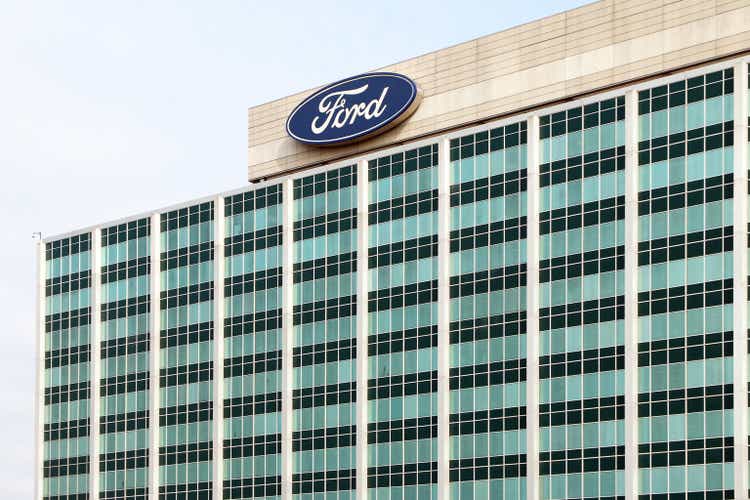
TennesseePhotographer/IStock Editorial via Getty Images
Ford Motor Company (NYSE:F) made a surprise during the week by scaling back or delaying some of its electric vehicles and saying it would produce more hybrid models. The Detroit automotive giant pushed by a new electric pick-up until 2026 and said its three-row electric SUV won’t be ready to sell until 2027. Additionally, Ford (F) delayed a second joint venture battery plant and reduced shifts for the F-150 Lightning.
Investors and analysts have backed what is largely seen as a logical reaction to the changing EV landscape in terms of demand and pricing. Morgan Stanley now expects Ford (F) EV volume in 2024 to be closer to 100,000 units than 200,000 units. The company now expects Ford (F) EV penetration to be between 5% and 10% in 2023, which is down sharply from some of its rosier forecasts from just a few years ago. UBS believes Ford (F)’s moves will generally be viewed positively by the Street, as they appear to constitute a more efficient use of capital and a better match of offerings to current consumer demands. However, there is a risk that the strong hybrid demand of recent months could cool.
The reset of Ford’s (F) strategy raises the question of whether the company would consider partnering with another player on its software-defined electric vehicle under development in a skunkworks operation in California. Morgan Stanley analyst Adam Jonas said he believes Ford (F)’s ability to work with China-based players like CATL, BYD Company, Xiaomi (OTCPK:XIACF) or others could be critical if geopolitical sensitivities are resolved. The elephant in the showroom now is what General Motors (GM) will do about its electric vehicle strategy. GM has been known to spend more time and money developing an in-house vertically integrated electric vehicle/battery platform that Jonas and his team believe is overdue for substantial scaling as GM seeks to emphasize hybrids and internal combustion engines.
As for Stellantis (STLA), CEO Carlos Tavares has already made public his call for lighter electric vehicles due to the enormous material costs of current generation battery technology. Tavares believes it will take time for a scientific breakthrough to solve the battery density problem to justify large-scale industry pushes towards electrification.
Meanwhile, a general question for investors is whether the slowdown in demand for electric vehicles is due to consumer affordability issues that could improve or whether a new operating paradigm is being created. Tesla’s (TSLA) stunning failure with its first quarter deliveries report has sparked some of these bearish thoughts.
Sector clock: Historic auto stocks such as Toyota Motor (TM) +31%, Ferrari (RACE) +24%, General Motors (GM) +23%, Honda Motor (HMC) +18% and Ford (F) +11% are all in territory positive for 2024. That’s not the case for all-electric auto stocks, with Canoo (GOEV), Rivian Automotive (RIVN), Nio (NIO), VinFast Auto (VFS), Lucid Group (LCID), Polestar Automotive (PSNY) and Tesla (TSLA) are all down at least 30% year over year.